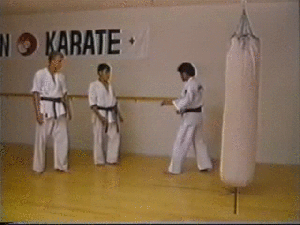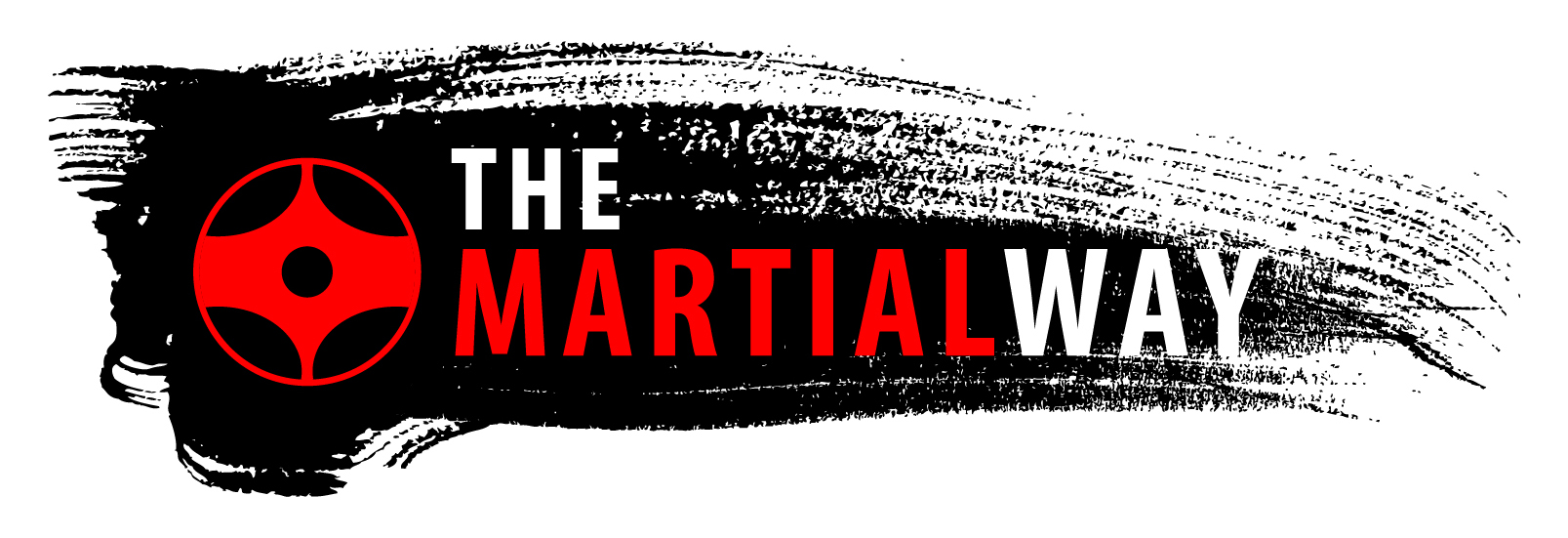Neuroplasticity. Probably not a word that you hear in conjunction with Kyokushin, but that is what last night’s lesson was.
The class was focused on kicks and knees, with the counter block and strike. Beginning with partner pad drills up and down the Contact Kicks dojo floor, culminating with partner work.
In the partner drills, without pads, one person delivers a front kick, and the other would block, reposition and counter. Fogarasi Sensei explains that this is reminiscent of Sabaki and Enshin Karate.
In the example of the mae geri, the defender parry’s the kick with his left, avoids the attack by stepping to the right, ‘moving off the line’ of attack, such that the receiver of the attack ends up in an advantageous position and the attacker is not. The defender can either grab the leg and sweep the other, or just parry the kick and counterattack.

We practiced this drills first with the left mae geri, then the right, and finally open. When you know which kick or side it’s coming from, it’s easier to work on the drill and defense. However, when you are moving with your partner and you have no idea which side the kick is coming from, it makes it a lot harder. Your senses have to be heightened and you have to be comfortable with your technique.
The other part that Fogarasi Sensei reminded us of was intent and focus. Once you block and counter attack, don’t just stand there and wait. Come back to a fighting ready stance. This goes for the attacker as well. Once you deliver the kick, whatever the defender does, make sure you go into a defensive fighting posture as soon as possible, ready for anything.
So, what does this have to do with Neuroplasticity? Fogarasi Sensei spoke to us about the importance of repetition. He was using the example of our brains as a computer that is programed, after a lifetime, to behave a certain way. And usually not the best. Blocking is an example of this. When a person is put into a stressful self-defense or fighting situation, they will immediately reply upon instinctual movements. Which are usually a flinching movement that more often than not makes the situation worse.
Therefore, we practice exaggerated traditional blocking movements. Over and over again. Thousands of times. Eventually, you reprogram, or rewire the brain, so that when you are in these situations, you will respond in a more productive and effective way. The movement will be smaller, but because of the thousands of repetitions, it will be second nature.
The rewiring is literal. We now know the brain is a computer. This was an area of interest and study for me a few years ago. I read a book called “The Brain That Changes Itself”, which influenced the learning. Neuroplasticity, also known as brain plasticity, refers to changes in neural pathways and synapses, which are due to changes in behavior, environment and neural processes, as well as changes resulting from bodily injury. Neuroplasticity has replaced the formerly-held position that the brain is a physiologically static organ, and explores how – and in which ways – the brain changes throughout life.
Scientists now know that neuroplasticity occurs on a variety of levels, ranging from cellular changes due to learning, like we do in Kyokushin, to large-scale changes involved in cortical remapping in response to injury, like a soldier who loses his sight or a limb.
Research shows that your brain doesn’t only have one center for, say, vision. It’s neuroplastic. If the default section of the brain is damaged, other sections will take over. Blind folks have had skin linked with the vision centers of the brain, and were able to see! Not as well as with their original eyes, but they could recognize individual faces by sight.
An important example of neuroplasticity can help Kyokushin Karate, is how humans gain skills. The book I mention above presents an experiment in which they mapped the brains of blind people learning to read Braille. Braille reading is a motor activity, which involves scanning with a reading finger, and a sensory activity, which involves feeling the raised bumps. The brain maintains a representation of these sensory and motor aspects, which are located in different cortices. The blind subjects practiced two hours a day, Monday through Friday, with an hour of homework. The mapping of their brains took place on Monday, after the weekend, and Friday, immediately after their week cram. What the scans ultimately showed is that the maps dramatically increased in size on Friday scans but returned to a “baseline” size on the following Monday. It took 6 months for the baseline Monday map to gradually increase and by 10 months they plateaued. After the blind subjects took a two-month break, they were remapped, and their maps were unchanged from their last Monday mapping.
What this shows is that long lasting changes as the result of skill learning took 10 months of repeated practice. The reason why short-term improvements were made based on the Friday mappings, but eventually disappeared, is the result of the type of neuronal connections that were taking place. The Friday mappings were the result of the strengthening of existing neuronal connections. Monday mappings, though showing little progress initially and plateauing at ten months, were the result of the creation of new neural connections.
So, in conclusion, as Fogarasi Sensei said, last night and in the past, in order to make what you are learning in Kyokushin a part of you, second nature, to reply upon at any time, you must repeat you practice over and over. Like the person learning braille. As Sosai Mas Oyama said, “One becomes a beginner after one thousand days of training and an expert after ten thousand days of practice.”
